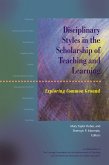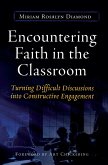With classroom response systems (or CRSs, also known as Student Response Systems, Individual Response Systems, or, informally, "clickers") in use in higher education for some 20 years, there is now both ample research and a wealth of examples and ideas to draw on for faculty who are contemplating their use, or exploring new ways to integrate them in their teaching.The research demonstrates that, integrated purposefully in courses, the use of clickers aligns with what neuroscience tells us about the formation of memory and the development of learning. In addition, they elicit contributions from otherwise reticent students and enhance collaboration, even in large lecture courses; foster more honest responses to discussion prompts; increase students' engagement and satisfaction with the classroom environment; and provide an instantaneous method of formative assessment.This book presents a brief history of the development of CRSs and a survey of empirical research to provide a context for current best practices, and then presents seven chapters providing authentic, effective examples of the use of clickers across a wide range of academic disciplines, demonstrating how they can be effective in helping students to recognize their misconceptions and grasp fundamental concepts.Like all pedagogical interventions, classroom response systems are no panacea, and the experienced contributors candidly describe avoidable pitfalls while demonstrating how clickers can deepen student learning and how, by providing instantaneous feedback, they enable teachers to make adjustments on the fly to better address student understandings or misunderstandings.The final chapter explores pros and cons of response systems that use mobile devices and smart phones, and the book concludes with an annotated list of further resources, such as books, articles, and videos.
Dieser Download kann aus rechtlichen Gründen nur mit Rechnungsadresse in A, B, BG, CY, CZ, D, DK, EW, E, FIN, F, GR, HR, H, IRL, I, LT, L, LR, M, NL, PL, P, R, S, SLO, SK ausgeliefert werden.









